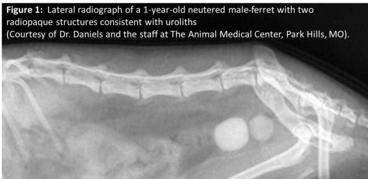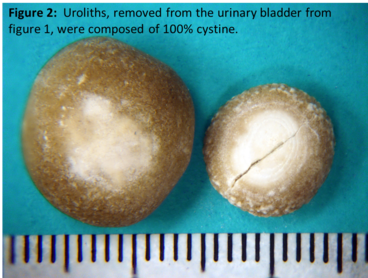Image of the month
Cystine rising: Ferreting out the cause
Cystine rising: Ferreting out the cause
Cystine (also called dicysteine) is a dimer of two sulfur-containing amino acids of cysteine. Cystine is sparingly soluble in urine and efficiently reabsorbed by kidney tubules. However, genetic mutations in the cystine transporter inhibit the kidney from reabsorbing cystine. Genetic mutations have been identified in dogs, cats and humans with cystine uroliths.
What about cystine in ferrets

(Figure 1 and 2) Initially, we reported that the most common urinary stone in ferrets was struvite, 67% of 408 submissions received between 1981 and 2007 (Figure 3). The second most common urolith was cystine (15%). Over the last 8 years, the tables have turned. From 2010 to 2017, only 6.5% of the 700 ferret urolith submissions were struvite, and a whopping 89% were cystine. (Figure 4)

Help us ferret out the reason why
The Minnesota Urolith Center and the U of MN Canine Genetics Lab are investigating genetic mutations responsible for cystinuria in ferrets. Genetic screening is performed at no cost to you (USA cases only). Contact Dr. Furrow at the Canine Genetics Laboratory for genetic testing.
